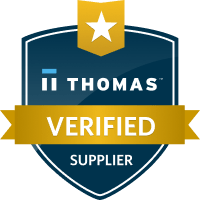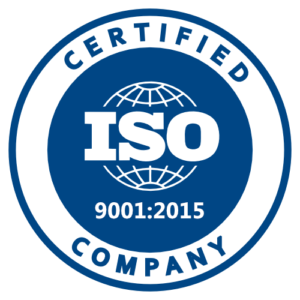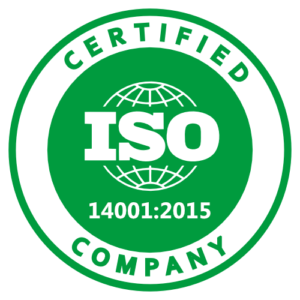
If you rely on your walk in freezer or cooler to preserve foods or products, maintain precise temperatures for pharmaceutical efficacy or medical research, or safely store hazardous materials, the upcoming refrigerant regulation changes will have a major effect on your next walk in purchase. Because this legislation limits the use of the high-global-warming-potential (high-GWP) hydrofluorocarbon (HFC) refrigerants found in most commercial refrigeration systems today, understanding these changes will help you make informed decisions that can impact your operation for years to come.
Here’s everything you need to know to stay on top of this new transition.
How We Got Here
Today’s commercial coolers and freezers primarily use hydrofluorocarbons (HFCs) as their refrigerant gases because they not only perform well across a wide range of temperatures, but they’re also non-flammable and chemically stable. The only problem is that they also have high global warming potentials (GWPs) that are higher than current AIM Act and EPA plans & objectives to dramatically reduce climate pollutants.
HFCs were originally adopted as safer alternatives to ozone-depleting substances like CFCs and HCFCs, but we’ve since learned that HFCs still contribute significantly to climate change.
Congress passed the American Innovation and Manufacturing (AIM) Act in 2020, giving the Environmental Protection Agency (EPA) authority to phase down the production and use of HFCs across industries. The phasedown will follow a 13-year schedule with the intent of reducing levels by 75% by 2036.
What’s Out and What’s In
Common HFC refrigerants being phased down under the A2L refrigerant transition because of their high GWP include:
These refrigerants are being replaced by A2L lower GWP refrigerants, such as A2Ls.
Common A2Ls include:
- R-454A
- R-454C
These low-GWP refrigerants are considered safe for use when handled and installed correctly. They comply with forthcoming EPA A2L refrigerant regulations, and using them instead of HFCs can go a long way toward protecting the environment.
What is an A2L refrigerant?
A2L is a classification, where the “A” indicates low toxicity, and the “2L” indicates low flammability. This is a change from HFC refrigerants, which are classified as A1, indicating that they are non-flammable with low toxicity.
A2L refrigerant requirements for safe operation
Unlike non-flammable HFCs, A2L gases carry a mild flammability rating (2L), which requires proper system planning and procedures to avoid injury to people and damage to property.
A safe system for A2L gases will require:
• Electronic systems on each walk in to detect leaks and close valving to prevent further refrigerant loss.
• Fans and evacuation systems to clear escaped gas, sized to walk in volume and refrigerant charge.
• Manual reset of system once a leak is detected.
A2L Refrigerant Costs & Buyer Considerations
Because these changes are legislation driven instead of performance driven, there will be some growing pains as the technology struggles to get up to speed with the new demand. As always, the early adopters will be the ones to feel them most keenly.
Potentially negative effects that purchasers may experience include:
- Higher complexity. New electronic systems add complexity to the design of the walk in. The more systems you have the greater the opportunity for component failures.
- Increased chance of spoiled goods. Having to manually reset your walk in system can be a serious problem if a leak occurs outside of business hours
- Multi-stage systems. A2L refrigerants aren’t as efficient as their HFC counterparts. The capacity of the refrigerant and related systems significantly decreases below -10°F where it may require additional mechanical capacity.
- Higher prices. All of these additional systems come at a cost that will be anywhere from 15-40% higher than 2025 prices.
- Technical issues. Diving into brand-new systems means that early adopters are most likely going to run into technical problems and have a harder time finding service techs who know how to fix them.
Important dates and requirements
Key milestones for the low-GWP/A2L refrigerant transition
| Date | Requirement | |
| January 1, 2025 | New stand-alone refrigeration units in the retail food subsector must use refrigerants with a maximum GWP of 150. | |
| January 1, 2026 | Remote condensing units, such as those found in walk ins, must use refrigerants with a maximum GWP of 300. There is no sell-through date for this subsector. | |
| December 31, 2027 | 3-year “sell through” and servicing of existing high-GWP units for the retail food subsector ends. | |
This staggered regulation rollout helps smooth out the supply chain transition for both manufacturers and buyers.
How these deadlines affect you
If you have a walk-in unit in good condition, you:
• Don’t have to replace it.
• Can continue using and servicing it.
• Need to be aware that some older refrigerants may become more expensive or harder to source over time.
Avoiding the cutting edge
Is your walk in nearing its end of life? It’s a good idea to consider purchasing a replacement before new legislation and higher prices go into effect. HFC units can still be purchased until December 31, 2025 where inventory lasts. On January 1, 2026 — or sooner, if inventory sells out — you’ll be forced in front of the cutting edge, only able to purchase a walk-in with A2L refrigerants.
Polar King is a phone call away
Not sure what the right move is for your operation? At Polar King, we’re up to date on the latest refrigeration advances and ready to answer all your questions.
Instead of scrambling to find contractors up to date on the latest technology, why not get a premium-quality, freestanding walk in cooler delivered fully assembled and ready to go with just a simple electrical connection? Whether you’re ready to purchase a time-tested HFC walk in soon or are planning to wait for the new rollout, a Polar King walk in is your best choice.
FAQs
What is an A2L refrigerant?
An A2L refrigerant is a low-toxicity, low-flammability gas (ISO 817 classification) designed to deliver cooling performance with a GWP under 700—dramatically lower than common HFCs.
When is an A2L refrigerant required?
For new walk-in coolers and freezers manufactured after Dec 31, 2025, the EPA requires a compliant low-GWP refrigerant such as an A2L. Existing units may continue operating with legacy HFCs.
Do A2L refrigerants cost more?
Initial equipment using A2Ls can be 15–40 % higher than comparable HFC models, largely due to added leak-detection electronics and the limited production scale during early rollout.
What are the key A2L refrigerant requirements for installers?
Installers must follow UL 60335-2-89 4th Ed., ensure leak detectors are wired to shut down the compressor, and size ventilation to keep concentrations below 25 % of the lower flammability limit.




